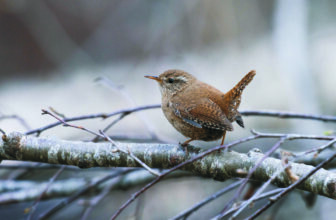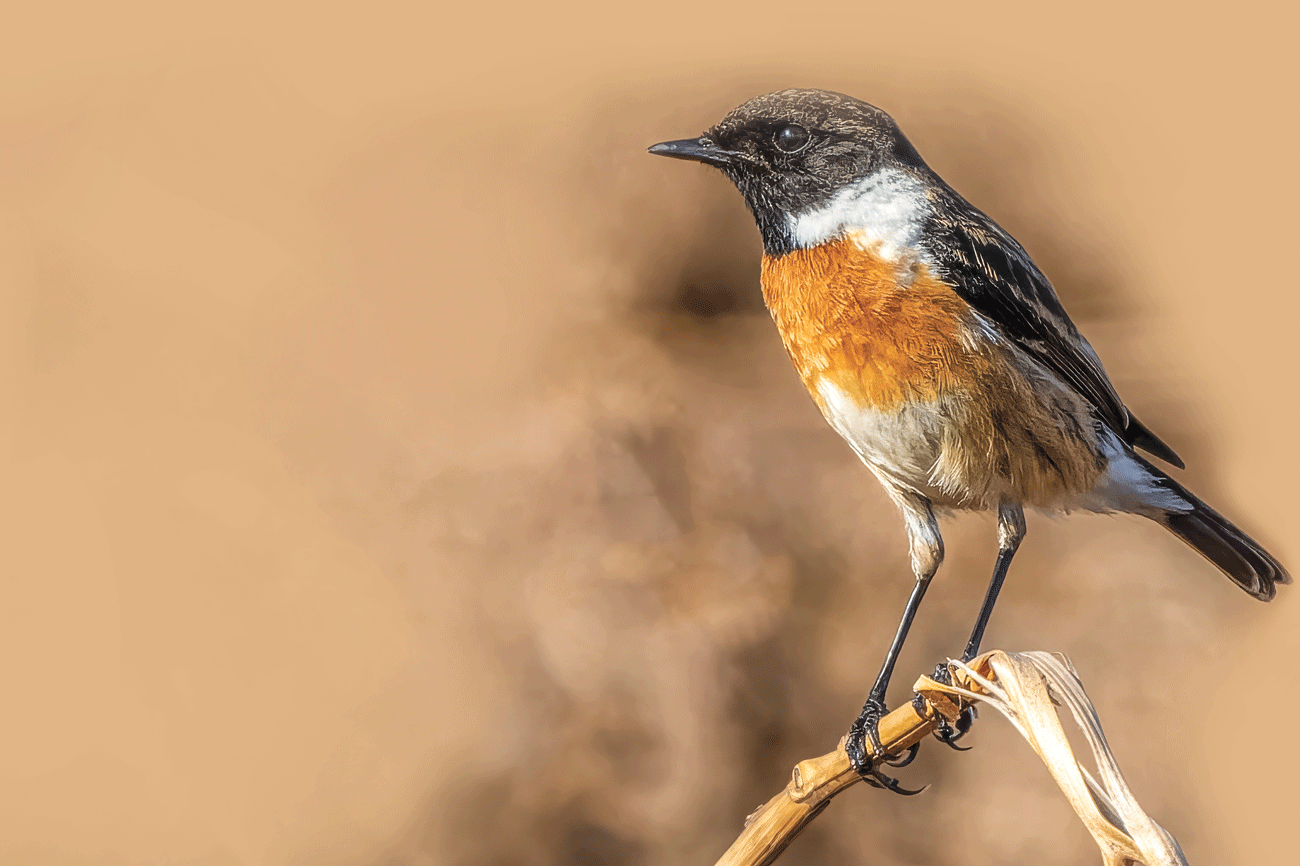
Recipe: take two small pebbles and hold one in each hand. Now tap one against the other. What you can hopefully hear is very much like the call of the Stonechat.
Out on the Surrey heaths this handsome fella, a little smaller and slimmer than a Robin, is in its element, chatting out stoney tapping tones for anyone who cares to listen.
With a black cap, wings and tail, light orange underparts, white on the rump and half of his collar, he is a delight to behold. If you cannot hear him then, if he is there, you will probably see him soon enough because he’s always on the move.
I always have an affection for birds that put on a bit of a performance rather than doze on a branch or whizz past and drop their calling card. And it they are friendly too – like this bird – so much the better.
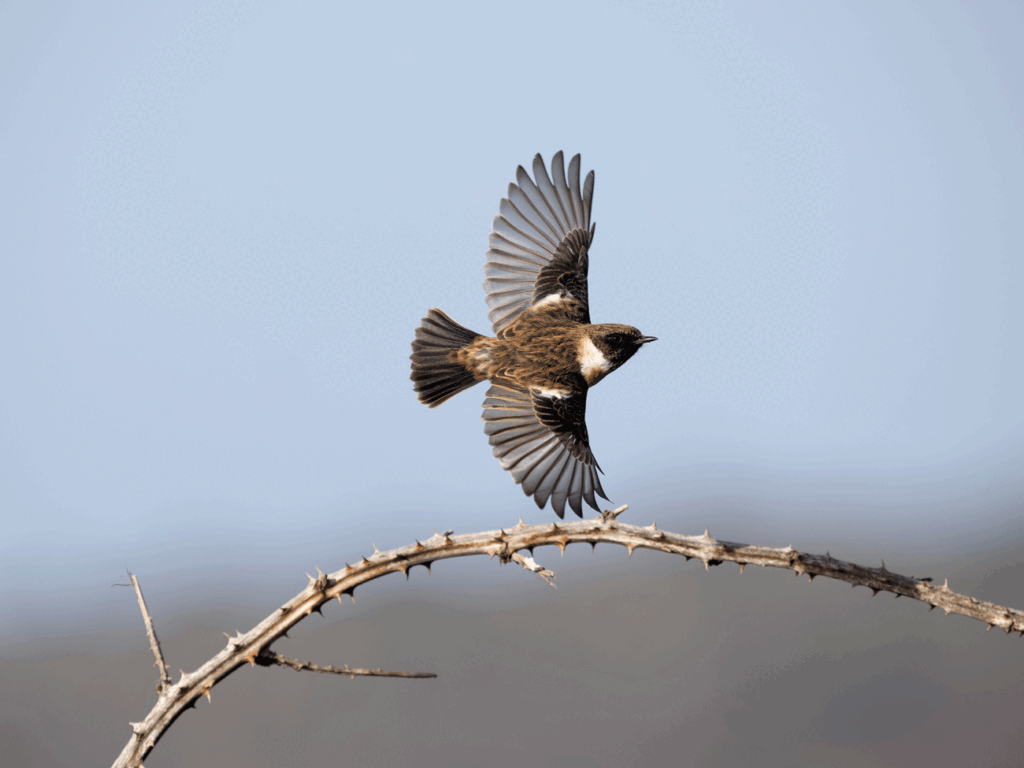
The Stonechat always seems to be active, surveying what is around from a convenient vantage point usually only a few feet up, such as a small sapling, sprig of heather or a stand of bracken.
When it spots an insect its fancies then it flies vertically up to as much as 25 feet to grab a bite to eat before descending back to its perch.
Soon it will probably move on and if you are patient enough, and stay still, there is a good chance it will move so close it could hear your softly chattered welcome.
Invariably I find the male Stonechat is in the company of a female and they don’t range far from one another’s side. They know what many humans have found – going food shopping with one’s partner invariably results in a fuller bill.
Stonechats are scarce breeders in the Cranleigh area because we don’t have much of their favoured heathland habitat. But they can commonly be seen on the county’s sandy heaths and deservedly are the bird the Surrey Bird Club portrays as its emblem.
Their numbers are often boosted in the autumn when migrants pass through and turn up unexpectedly in more unusual habitat such as fields, hedgerows and waste ground.
I have enjoyed seeing unusual numbers at various sites over the last few weeks with as many as six hunting together. Some will stay all winter before returning to their breeding areas where they won’t just chat but will give their scratchy song.
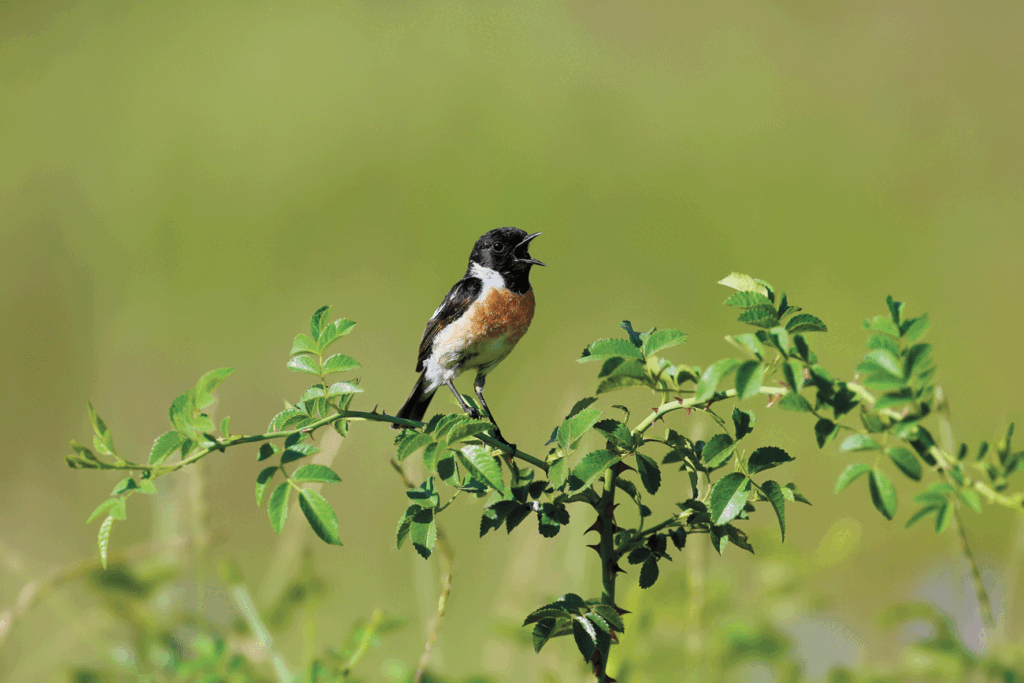
Back on the heaths the males can be heard before dawn and I’ve heard them still going strong after 10pm in the summer.
Stonechats should be quite easy to identify but you can’t always believe what you see.
If you walk up to the top of Holmbury Hill you will notice a relatively new and expensive looking information board from the Friends of the Hurtwood.
It informs visitors about the iron age fort there and provides a few nice photos of the heathland species that were assisted by the excellent restoration of the area in the 1990s by ranger Peter Haynes.
Against a picture labelled ‘Stonechat’ it explains: ‘Before the hill fort was cleared, the encroaching trees made the area unsuitable for this bird. Now it is hoped that the Stonechat will return to this open space.’
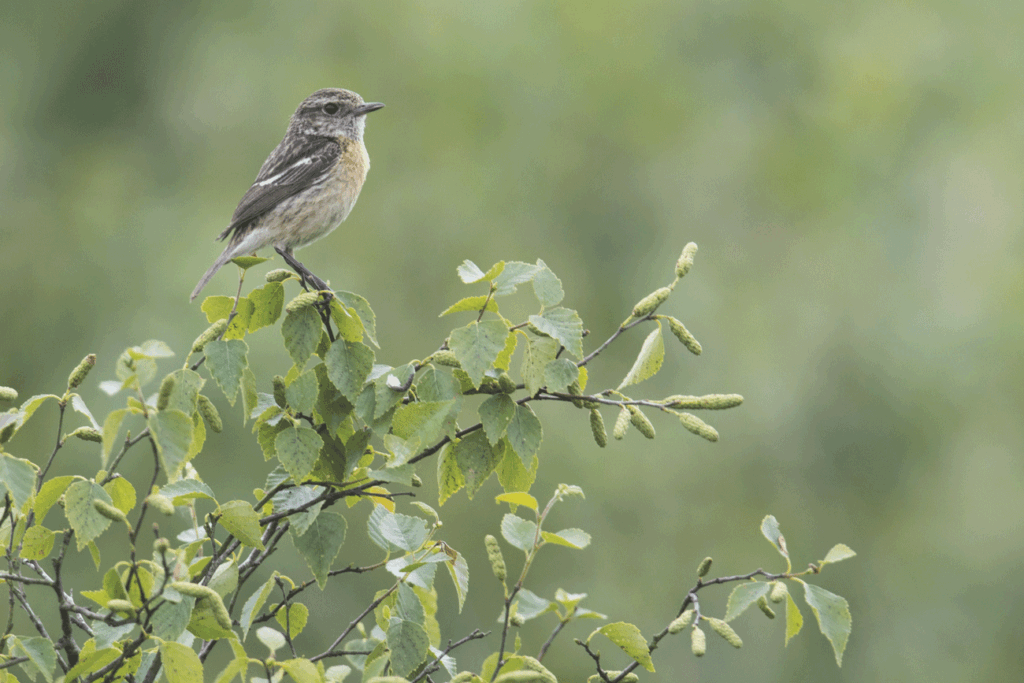
Armed with this information you sadly might not have gone on to identify any Stonechats in the vicinity.
Unfortunately, the photo is of a completely different handsome bird, a summer male Whinchat. This is a visitor from Central Africa and it has not bred in Surrey since 1980.
Now it is only a very scarce visitor to our county on its autumn migration and you’d certainly be chatting about it if you found one at this site.
The Stonechat is always a species I enjoy watching and don’t take for granted. Their numbers have increased around here in recent decades but who knows how they will fare in future?
And there’s another thing I like about them. As well as their own mate they often have another ‘mate’ from another species nearby. They both seem to attract one another and when it comes to feeding, they chat the same language. More on these unlikely twins next month.



